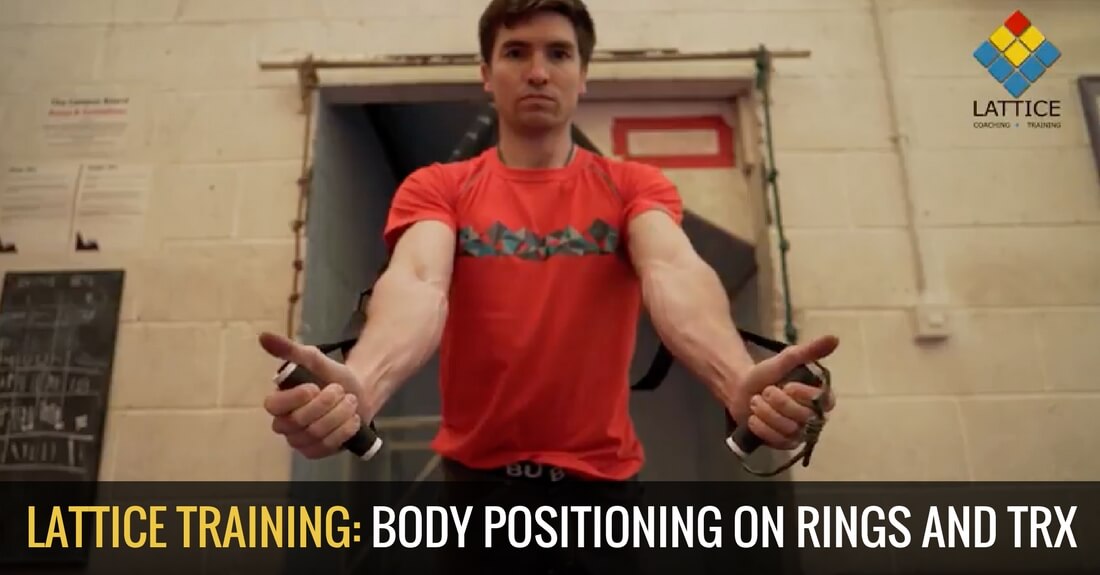The Olympic Rings and TRX are very valuable training tools. They can be used to train climbing specific strength, especially core strength and shoulder stability. They can also be used effectively as part of an injury prevention program to train antagonist strength.
However, as with all training exercises, it’s not good enough to simply use the rings and TRX. Form is really important. Cheating exercises with improper form will either lead to you not seeing results or, at worst, getting injured.
To help make sure you are using the rings and TRX correctly, here’s a short article and a video from Ollie Torr and Tom Randall of Lattice Training. In these pieces, Tom and Ollie outline and demonstrate the basics of proper form and body positioning on the rings and TRX. No matter what exercises you plan on doing on these training tools, make sure you get the basics right first! We’ll let Tom and Ollie take it from here…
Lattice Training: Body Positioning on Rings and TRX
The Olympic Rings and TRX are very common tools to see in climbing gyms around the world – the growth of this exercise type has grown in incredibly in climbing in recent years! We’re real advocates of this strength and conditioning method, so we’d like to share some of our top tips for correct form and posture.
Because it’s an exercise that is very easy to moderate intensity (you simply have to move your feet or adjust the height of handles) we see a lot of climbers get carried away with pushing the difficulty at the expense of good form. Whilst it is obvious that they will then increase the risk of an injury during training, it appears less known that you may also be decreasing the effectiveness of your sessions by targeting the wrong muscles.
- For I, Y or T positions aim to keep your chest open and shoulders in a retracted and “engaged” position. This will work your shoulder stabilizing muscles more effectively and protect the shoulder joint during the most intense movements.
- Keep your thumbs pointing “up” or “out” rather than “in” as this will further promote an effective shoulder position whilst exercising.
- Do not allow your lower back to arch or your shoulders to hyperextend. A method to combat this is to think about sucking your belly button back inwards whilst completing each rep and also engaging the glutes.
- Complete shorter and higher quality sessions rather than long exhaustive training sets that are high in quantity and poor in form.
As these exercises are often close to the extremes of your comfortable range of movement, we recommend that you initially learn these exercises with the guidance of an experienced friend or coach to first show you correct form. Once you have this mastered, then look to slowly increase intensity and range of movement. In general, you should not look to complete this form of training more than twice a week unless highly experienced or under the guidance of a personalized training program.
Body Positioning on Rings and TRX Video
cover photo courtesy of latticetraining.com
Other Articles You Might Like:
- Lattice Training: TRX and Rings
- Gymnastic Rings: Strength Training for Climbing
- Rings/TRX Workout Video
- Ask Kris 005 :: Improving Core Strength for Climbing






Leave A Comment